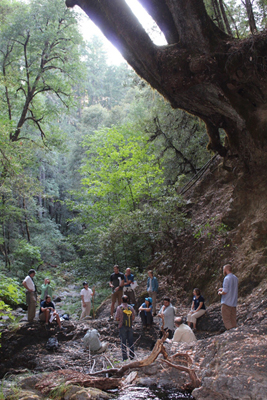Soil Science Society of America
5585 Guilford Road • Madison, WI 53711-5801 • 608-273-8080 • Fax 608-273-2021
www.soils.org
Twitter | Facebook
NEWS RELEASE
Contact: Hanna Jeske, Associate Director of Marketing and Brand Strategy, 608-268-3972, hjeske@sciencesocieties.org
What is the critical zone?
April 2, 2018 – Deep underground, changes to rock layers are impacting the Earth’s surface. The Soil Science Society of America (SSSA) April 1 Soils Matter blog explains how these deep layers inform our knowledge of surface soils.
 Typically, soil scientists study a depth that stops where rock starts. This rock, or parent material, is part of what makes soil different from one area to another. Scientists who study the deeper layers of rock are looking at the critical zone—an area that includes the water, air, ecosystems, as well as hard rock.
Typically, soil scientists study a depth that stops where rock starts. This rock, or parent material, is part of what makes soil different from one area to another. Scientists who study the deeper layers of rock are looking at the critical zone—an area that includes the water, air, ecosystems, as well as hard rock.
“New research shows that what is happening to the parent material can later affect soil formation, and the soil itself,” says blog author Justin Richardson, University of Massachusetts, Amherst. “Think of it as looking at your genetic background through a genetic test!"
For example, researchers have found that what was once considered activity towards the surface only can also be observed deeper! “Bedrock weathering is happening as deep as 23 feet below the surface,” Richardson says. “These findings have important impacts in future research of soil formation.” Other researchers are looking at how fast rocks can generate soil, replacing soil lost to erosion.
While critical zone scientists have a different focus than soil scientists, Richardson points out an important similarity. “We are all working to protect soil as an important natural resource. Learning more about soil formation–and going back in the process–will lead to new discoveries.”
To read the entire blog post, visit https://soilsmatter.wordpress.com/2018/04/01/what-is-the-critical-zone/.
Follow SSSA on Facebook at https://www.facebook.com/SSSA.soils, Twitter at SSSA_Soils. SSSA has soils information on www.soils.org/discover-soils, for teachers at www.soils4teachers.org, and for students through 12th grade, www.soils4kids.org.